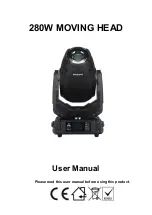
●
Mount the transducers on poles secured to the side of your vessel. Adjust the pole length
to mount the transducers at the desired depth. The transducers should at least clear the
keel of the vessel.
●
Mount the transducers hard against the hull of your vessel. This is a very clean mounting
technique that does not require disassembly when the vessel is in motion. Consider
however that the hull will shield any sonar signals. Mount the transducers on the hull such
as to obtain a good ‘sonar view’ of the environment
●
If you are operating from a small vessel such as an inflatable, your baseline may be too
short to be useful. In this case, mount one transducer on the boat and the second
transducer on a buoy anchored some distance away. You can run the transducer cable
through the water. If necessary, attach small floatation devices to the transducer feed
cable.
In general, the surface station transducers should be lowered at least 2 meters into the water,
always below the keel, and with sufficient weight or other stabilizing methods to keep them from
swinging about in the surge. Some more detailed considerations are listed here.
Surface Station Transducer Mounting Considerations
●
Many objects reflect sonar energy, especially if they contain air such as a ships hull, air
tank or even kelp. A 'shadow' is thus created behind the body. A transducer located in
that shadow may not pick up sonar energy. It is important to ensure that transducers are
placed such that no path blockage will occur. The system can tolerate temporary
shadowing, but a permanent blockage will result in loss of navigation and communication
capabilities.
●
There are many natural and man-made noise sources under water. All stations in a
network must be able to ‘hear’ the other stations. This implies that the signal of the other
stations must be ‘louder’ than the background noise. Thus, it is important to keep sonar
transducers away from any interfering noise sources. Most problematic is high frequency
noise such as is generated by a boats propeller churning in the water, gas or fluids
‘hissing’ through a pipe, the banging of tools or loose power equipment etc. The system
can tolerate momentary, sporadic noise. It will also tolerate low frequency noise, such as
the hum of an engine or a generator. However a persistent high frequency noise source
will raise a ‘curtain’ that PILOT may not be able to penetrate.
●
Also consider the stability of your mounting technique. The baseline transducers are the
reference for all measurements. Consequently, a shifting baseline will result in skewed
position fixes.
●
Practical limitations may not allow you to obtain an ideal setting for transducer mounting.
However you should attempt to minimize the interfering factors.
5. Registering the Transducer Locations and the Noise
Test















































